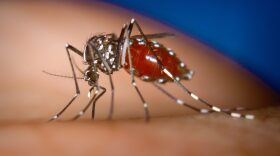What do you think of when NASA comes up in a conversation? Rockets? Rovers? Astronauts? Martians? Did you know that NASA is home to the world's largest group of Earth scientists?
With 25 Earth-observing satellites in orbit, the agency tracks critical changes all over the planet and puts that data into the public domain as quickly as technology allows. They observe everything from coastal erosion to volcanic eruptions to light pollution.
"Really the name of the game for us is trying to get all these data and see how we can get a better understanding of how the planet works," said John Bolten, chief of the Hydrological Sciences Lab at the NASA Goddard Space Flight Center in Maryland.
The Conversation spoke to Bolten ahead of Earth Day to learn how NASA shares its data with the public and state agencies like the Hawaiʻi Department of Land and Natural Resources.
"Our job is getting the data into the hands of decision-makers, the hands of just the everyday person. And we're doing a lot of things that are very, very relevant. These days you can access NASA data and learn from your cell phone," he said.
Head to nasa.gov/earth to learn more.
This interview aired on The Conversation on April 21, 2023. The Conversation airs weekdays at 11 a.m. on HPR-1.




